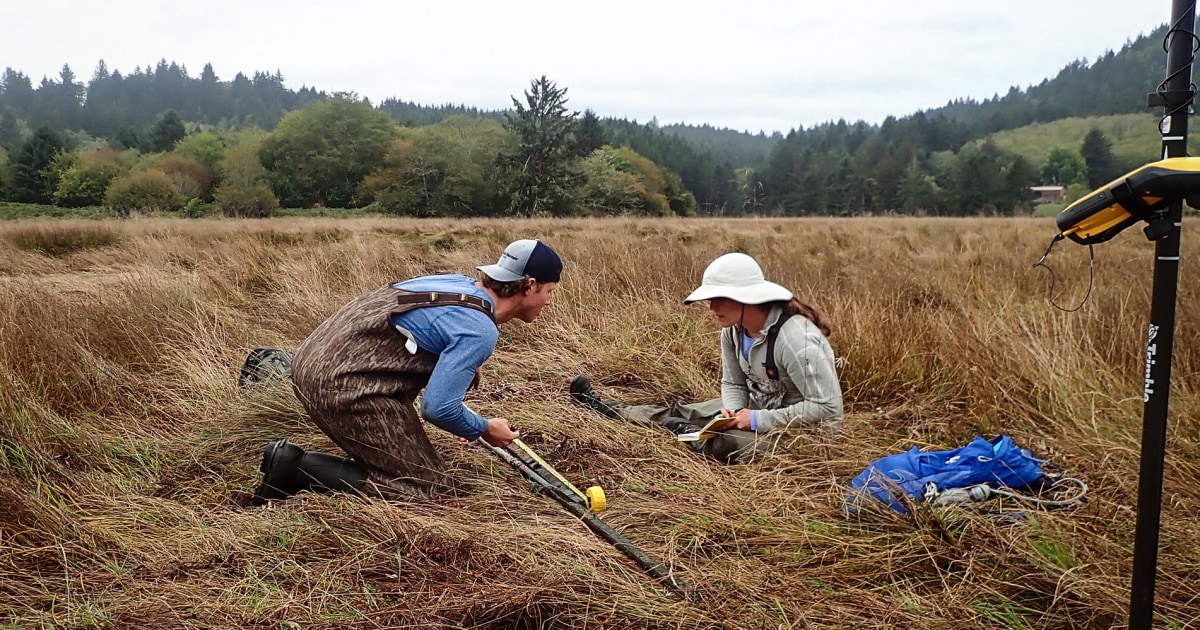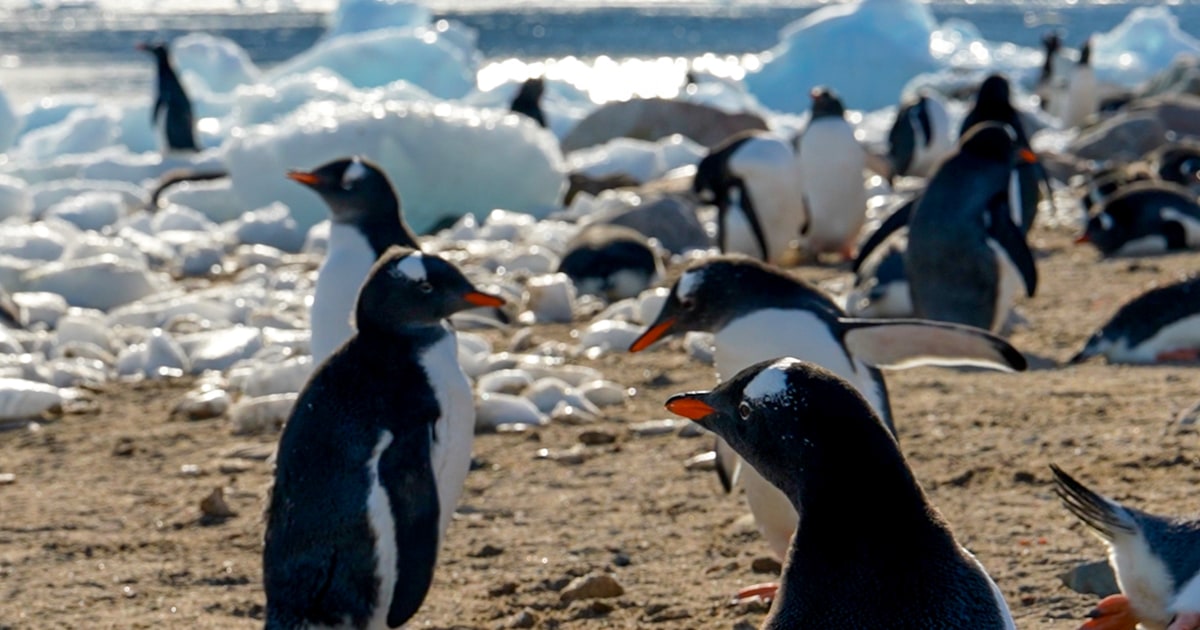MEXICO CITY — Leonidas Otlica Reyes is tormented by the drought experienced in Río Frío de Juárez, a town located in the state of Mexico, where for a year the rains have decreased to the point where the streams have become swampy puddles that cross the parched land.
"Right now we have a big problem due to the lack of rain. There is no water. The scarcity is too much," said Otlica Reyes, a 46-year-old waiter who since 2016 has been part of the Río Frío Conservation Group, an association focused on environmental protection.
For Otlica Reyes, the most worrying thing is not only the serious effects of the scarce rains on the area’s crops, but also the threat that looms over the volcano axolotl (Ambystoma leorae), an amphibian in critical danger of extinction. It receives its name from its habitat near the Telapón and Tláloc volcanoes, in the mountainous enclave known as the Sierra Nevada, east of Mexico City. In that area are the Tula and Río Frío streams, which are the only places where this species of axolotl develops.
“We had never felt this heat, nor had we seen this drought,” Otlica Reyes said dejectedly in an interview with Noticias Telemundo. “There is no river precipitation. We don’t have any of that and right now that is the greatest danger we have for the axolotls.”
Axolotls belong to the genus Ambystoma and are a species of neotenic salamander, which means these animals maintain some juvenile characteristics throughout their reproductive life.
Felipe Osuna López, an academic at the Colegio de la Frontera Sur and member of the Río Frío Conservation Group, said that axolotls are of great importance in the ecosystem because they are the main predator in the streams and help maintain the biological balance in the area.
“They are a bioindicator par excellence; they keep the invertebrate population at bay and with that they contribute to maintaining the quality of the water,” Osuna López explained. “If the axolotls are well, it means that the water bodies are in good condition and that guarantees the water supply for thousands of people in neighboring communities.”
Axolotls live in rivers and streams, so the characteristics of these habitats have determined their evolution. This has made them very vulnerable to changes in these bodies of water, Osuna López said. This has caused a notable decline in their population from factors related to the modification of their habitat, such as river pollution, according to a 2018 study by Mexico's Ministry of the Environment and Natural Resources.
Osuna López along with Otlica Reyes and others launched a fundraising campaign to save the axolotls that are languishing and dying in the area’s bodies of water. According to their estimates, there are fewer than 200 specimens of this species left in the area’s streams.
“For the first time, in this dry season, water stopped flowing in the Tula stream and became stagnant, so the axolotls clung to survival,” Osuna López said. “Fortunately, we were able to detect it in time and we took on the task of relocating the axolotls to areas that have better conditions.”
The axolotl population had increased in numbers, according to Osuna López. “The bad thing is that in Tula, where we had the largest population, the lack of monitoring and presence meant that these climatic attacks were not detected in time and the population was reduced,” he said.
The most recent figures from the National Water Commission (Conagua) show that the absence of rain is a national problem: 67.97% of the Mexican territory shows moderate to exceptional drought, which affects ecosystems and has generated an increase of 60% in forest fires.
In the case of the volcano axolotls, the campaign launched by the Río Frío Conservation Group seeks to raise 65,000 Mexican pesos (about $3,900) for monitoring work, maintenance of bodies of water and educational campaigns with the community, among other activities.
"This is a reactive strategy to overcome this dry season and help the axolotls. We are relocating them, we are monitoring them and maintaining the levels of the pools so that they have the conditions to survive," Osuna López said. "In the medium term we need to restore, to the extent possible, these streams so that they can retain a greater amount of water."
'Part of our identity'
The Mexican axolotl has great importance in the country’s culture that dates back to pre-Hispanic times. The Aztecs viewed the axolotl as a manifestation of Xolotl, the twin god associated with death and transformation.
“The axolotl appears for the first time in pre-Hispanic codices and is associated with Aztec deities. The axolotl was the twin brother of Quetzalcoatl and this is how it is represented in mythology. Culturally, this amphibian is part of our identity,” said Diana Vázquez Mendoza, a researcher at the Ecological Restoration Laboratory at the National Autonomous University of Mexico's Institute of Biology.
The genus Ambystoma is made up of 33 species distributed throughout North America, from southwest Alaska and southern Canada to the Mexican Highlands. According to data from the Ministry of Environment and Natural Resources, in Mexico's case, there are 17 species distributed in the northeast and center of the country.
Of that total, 16 are endemic, as is the case of the specimens of Ambystoma leorae, better known as the volcano axolotl, and the Ambystoma mexicanum, which are the best known axolotls and are found in Xochimilco, an area south of Mexico City that is well known for its network of canals that surround agricultural plots called chinampas.
The volcano axolotl species is much smaller than, for example, the Xochimilco axolotl, according to Osuna López. “Our species is on average about 15 centimeters from the snout to the tail. And it presents a great morphological variation. We have gray, black, browns, yellows. We had greens, even with reddish tones, but unfortunately they have already been lost,” he said.
Vázquez Mendoza said that axolotls, as they are amphibians, "are very delicate animals that are very sensitive to environmental changes due to the type of skin they have and their morphology. And it is evident that there is a problem of climate change that is affecting ecosystems at a local level."
The researcher explained that the Xochimilco axolotls are also in danger due to the urbanization of areas near their habitats, changes in environmental conditions, and the pollution of canals and other wet areas where the species develops.
For Otlica Reyes, what happens with the axolotls is not an isolated event, he said with concern. Communities need to be continuously aware so they can mobilize and protect their local flora and fauna.
"It is not a problem for the axolotls, but for the entire community, both people and other living beings," he said. "We all need water, but right now the axolotls are really missing it."
An earlier version of this story was first published in Noticias Telemundo.
Albinson Linares, Noticias Telemundo

 1 year ago
1 year ago
 (200 x 200 px).png)








 English (US) ·
English (US) ·